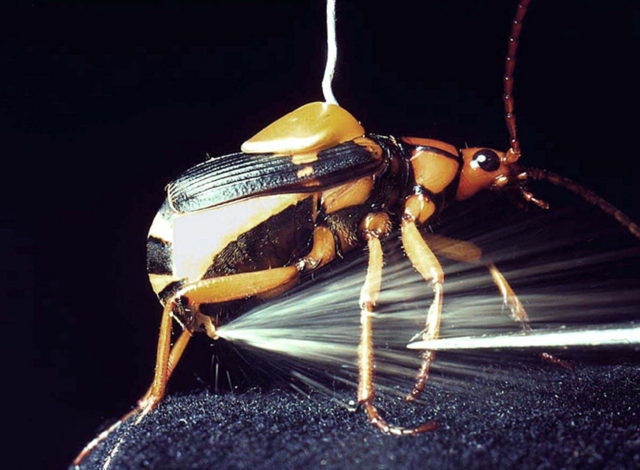Мода постоянно меняется и отражает уникальные социально-политические реалии эпохи. Тем не менее, некоторые модные тенденции в истории определенно можно назвать «странными», и мы здесь, чтобы поговорить о них. Любопытно, что некоторые из них, вероятно, вписываются в более современное представление о моде, даже если они совершенно неуместны в свое время.
10. Одноразовые бумажные платья
Бумажные платья были огромной — пусть и недолговечной — модной тенденцией 1960-х годов , и это было именно то, на что это похоже. Изготовленные только из бумаги, эти платья были популяризированы такими брендами, как Scott Paper Company и Kleenex , поскольку они пытались нажиться на тенденции «устойчивого развития» того времени. Конечно, эти платья продавались с чрезмерной рекламой и продуманными рекламными кампаниями, но ничего не делали для решения внутренней проблемы изготовления одежды из бумаги.
Хотя они были недорогими и одноразовыми, что делало их привлекательными для молодых женщин, ищущих модные и доступные модные варианты, они также были крайне непрактичными. Помимо того, что они были склонны рваться в самые неподходящие моменты, эти платья вряд ли были предназначены для износа в повседневной жизни. Тенденция сошла на нет достаточно скоро, хотя бумажные платья по-прежнему носили на вечеринках и других светских мероприятиях на протяжении 60-х годов.
9. Макарони
Макарони были субкультурой, возникшей в городских районах Англии конца 18 века, в основном среди молодых мужчин из высшего сословия. Стиль был намеренно преувеличенным, с яркими цветами, рубашками с оборками и замысловатыми прическами, что сделало его, возможно, одной из первых нескольких ироничных хипстерских субкультур за всю историю человечества. Макаронис бросал вызов установленным общепринятым границам класса, пола , расы и даже национальности, хотя в основном в шутку, а не в серьезном заявлении о социально-политических условиях того времени.
Это также была очень высмеиваемая субкультура, поскольку Макарони часто становились объектом шуток со стороны представителей СМИ и карикатуристов. В конце 18 века популярность субкультуры снизилась, поскольку в моду снова вошли более консервативные и традиционные стили одежды. Однако их влияние все еще ощущалось в некоторых подводных течениях современной моды, особенно в использовании смелых узоров и андрогинных стилей.
8. Краков

Краковы, также называемые пуленами , получили свое название от города Краков в Польше, где они стали популярными и распространились в других частях Европы где-то в 14 веке. По сути, это были туфли с чрезмерно длинными и явно неудобными заостренными носками, которые в некоторых моделях вытягивались более чем на фут. Краковы были популярны среди состоятельных людей , так как (правильно) предполагалось, что только тот, у кого есть деньги, может позволить себе до такой степени удлинить свою обувь.
Однако к концу 15 века мода на комично длинные пальцы ног пошла на убыль, вероятно, из-за их очевидной непрактичности и дискомфорта. Краков вскоре вышел из моды по всей Европе, хотя время от времени они все еще переживают периоды возрождения в некоторых субкультурах альтернативной моды. Согласно относительно недавнему археологическому исследованию , краковы, возможно, даже навсегда изуродовали ноги по крайней мере 200 европейцев того времени, что, должно быть, еще больше ускорило их упадок.
7. Ртутные шляпы
Фетровые шляпы были в моде в Европе в 18-19 веках. Сделанные в основном из заячьего и кроличьего меха, они были значительным улучшением по сравнению с предыдущими конструкциями головных уборов, поскольку были намного прочнее и сохраняли свою форму в течение гораздо более длительных периодов времени. К сожалению, это стало возможным только благодаря совершенно новому усовершенствованию в мастерской, которое использовалось для склеивания меха — порошкообразной ртути.
Как и следовало ожидать, длительное воздействие паров ртути серьезно повлияло на здоровье мастеров шляп по всей Европе, что привело к заболеванию, известному сейчас как болезнь Безумного Шляпника. Симптомы включали тремор , потерю памяти, резкие перепады настроения, психоз, проблемы с сердечно-сосудистой системой и даже раннюю смерть в некоторых случаях. Хотя эта тенденция не сильно повлияла на тех, кто носил шляпы, для ее создателей это был огромный профессиональный риск. Однако спрос на шляпы оставался высоким, особенно в Великобритании, где они вышли из моды только в 1960-х годах .
6. Черные зубы
По какой-то причине черные зубы стали популярной модной тенденцией в Англии эпохи Тюдоров, с 1485 по 1603 год . Во многом это произошло из-за чрезмерного потребления продуктов питания на основе сахара благодаря недавнему увеличению предложения из Америки. Черные и гнилые зубы были обычным явлением и ценились как символ статуса среди британской королевской семьи, особенно королевы Елизаветы I , которая была известна своим пристрастием к сладкому.
Тенденция была настолько популярна, что, согласно некоторым источникам, британские хирурги могли даже использовать в качестве имплантатов почерневшие зубы трупов. Поскольку сахар по-прежнему был дорогим и редким ресурсом, люди из низших классов вместо этого находили способы чернить зубы своими руками , поскольку они видели в этом признак богатства и класса.
Черные зубы были популярны среди мужчин и женщин в течение нескольких десятилетий, хотя эта тенденция начала снижаться в годы заката династии Тюдоров, когда люди поняли, что гниющие, вонючие зубы, вероятно, не так модны, как они думали.
5. Бомбардировка

Бомбардировка была тенденцией эпохи Возрождения, которая стала популярной где-то в конце 16 века, особенно в Англии, когда королева Елизавета I снова была одной из ее пионеров. Он характеризовался чрезмерным использованием набивки внутри обычной одежды, чтобы ее владелец выглядел крупнее — или, если можно, более «напыщенным», — чем он был на самом деле. Набивка, обычно сделанная из таких материалов, как шерсть или конский волос, использовалась для создания крупной и внушительной фигуры, особенно в области груди и плеч, что необъяснимо считалось признаком богатства и высокого статуса.
Бомбардировка оставалась популярной в Европе, особенно в Испании и Англии, на протяжении конца 16 и 17 веков. Однако эта тенденция подошла к концу в 18 веке, когда в то время популярная мода сместилась на более удобный и менее преувеличенный вид.
4. Александра Лимп
Александра Датская вышла замуж за британского принца Эдуарда VII в 1863 году и вскоре стала иконой моды в Лондоне и других городских районах страны. Все, что она делала, каким-то образом становилось популярным среди британских масс, в том числе своего рода колье, которое она носила, чтобы скрыть шрам на шее. Однако самой нелепой из них была хромота Александры.
Из-за состояния, из-за которого в 1867 году у Александры возникли серьезные проблемы, у Александры развилась ярко выраженная вялая и медленная манера ходьбы, что на самом деле могло случиться с каждым. Это также стало большим событием в британской моде, поскольку люди по всей Англии и ее колониям начали считать модным ходить точно так же. Удивительно, но это была лишь одна из многих глупых тенденций ходьбы, имевших место в Англии в то время, включая не менее нелепую, но менее популярную греческую сутулость .
3. Ювелирные изделия с насекомыми

Ювелирные изделия в форме насекомых, таких как жуки и муравьи, распространены даже сегодня, но как насчет того, чтобы сделать их с настоящими насекомыми? Хотя сегодня эта идея не кажется очень модной или гигиеничной, она стала неожиданным модным хитом в викторианскую эпоху благодаря их знаменитой одержимости естественной историей и образцами далеких экзотических живых существ.
Ювелирные изделия и аксессуары, сделанные из насекомых, были повсюду в Англии в то время, особенно среди высших слоев общества, которые могли позволить себе более модных жуков. Сюда входили живые насекомые, скрепленные булавками или веревками, но все же достаточно свободные, чтобы бродить по различным предметам одежды викторианской эпохи . Эта тенденция еще больше подпитывалась «открытием» новых видов в Америке, пик которого пришелся на 1870-е и 1880-е годы.
2. Блио

Когда-то в XII веке богатые люди по всей Европе решили, что их руки слишком свободны для человека с большими деньгами, поскольку это можно было принять за работу или другие крестьянские занятия. Чтобы действительно донести мысль, они начали носить одежду с очень длинными рукавами, которая в конечном итоге превратилась в то, что мы теперь знаем как блио.
Эти наряды отличались чрезмерно длинными рукавами — иногда даже до пола — и узкой талией, хотя дизайн менялся в зависимости от того, где вы находились. В Германии, например, люди предпочитали блио, которые были немного свободнее на талии и скреплялись ремнем, в сочетании с длинными рукавами до пола, которые расширялись очень близко к запястьям. В Польше, с другой стороны, рукава стали расширяться в районе локтей, а талия выглядела более свободной и расслабленной. Тенденция просуществовала около пяти десятилетий , хотя можно увидеть ее далеко идущее влияние на европейскую моду еще на многие столетия вперед.
1. Мышьяк

Викторианская эпоха славилась причудливыми и нестандартными модными тенденциями, которые также можно отнести к промышленным опасностям высокого уровня. Одним из таких трендов был мышьяк , который использовался практически во всем: от платьев до косметики и обоев. Его было особенно много в этот период времени, поскольку усовершенствования промышленной революции позволили производить его гораздо быстрее.
Возможно, самым опасным из всех заменителей мышьяка, популярных в то время, был зеленый Шееле — пигмент, сделанный из арсенита меди, который мог идеально имитировать яркий зеленый цвет, встречающийся в природе. Он был повсюду — от макияжа глаз до платьев и даже детских игрушек — придавая всему периоду определенный зеленый оттенок. Как несложно догадаться, длительное употребление вещества часто приводило к пожизненным изнурительным состояниям, а иногда и к летальному исходу.
📚 Не пропустите интересную информацию:
-
10 городов Турции, которые обязательно стоит посетить любителям истории
Иногда, чтобы почувствовать дыхание истории, не нужно пересекать океаны. Достаточно просто оглянуться вокруг — и перед вами откроется страна, в которой слои времени лежат друг... -
Модные тенденции садовой мебели 2025 года: комфорт с характером
Сад — это уже давно не просто участок земли с грядками. Это продолжение дома, зеркало вкуса и образа жизни. В 2025 году эта философия выходит... -
Обзор 1-го сезона «Poker Face»: история на данный момент
Наташа Лионн, играющая персонажа сверхъестественно одаренной, слегка эксцентричной женщины, у которой проблемы с законом, всегда очень развлекает, и после «Матрешки» Netflix, криминальный комедийно-драматический сериал на... -
Обзор «Вечного» Netflix: скучное шоу о вторжении инопланетян с великолепными визуальными эффектами и историческими аллегориями
Научно-фантастический жанр — это место для едких комментариев о политике, культуре и обществе. Фильм «Хирак Раджар Деше» , снятый правительством Западной Бенгалии, иронично рассказывает о... -
7 крупнейших астероидов, упавших на Землю в истории
Первые сто миллионов лет существования нашей Солнечной системы были похожи на сцену из фильма ужасов, полную хаоса и гигантских столкновений. Зарождающаяся Земля постоянно подвергалась ударам...





